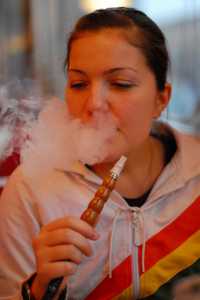07 Jan Non-Cigarette Tobacco Products Double Chances of Youth Smoking Within a Year
MedicalResearch.com Interview with:
 Benjamin Chaffee, DDS MPH PhD
Benjamin Chaffee, DDS MPH PhD
UCSF School of Dentistry
San Francisco, CA 94118
MedicalResearch.com: What is the background for this study? What are the main findings?
Response: Non-cigarette tobacco products, which include electronic cigarettes, hookah (tobacco waterpipe), smokeless tobacco, and non-cigarette combustibles, like cigars, are increasingly popular among young people. Considerable debate surrounds whether use of these non-cigarette products encourages youth to begin smoking conventional cigarettes.
Several previous studies have shown associations between non-cigarette tobacco use and youth smoking. These studies had largely looked at only one type of tobacco product at a time. This study included more than 10,000 adolescents from all over the United States, surveyed at two time points one year apart. Therefore, this study featured enough participants and detailed information about tobacco behaviors to consider all types of tobacco products in a comprehensive way.
We found that each type of non-cigarette tobacco product (i.e., e-cigarettes, hookah, combustibles, or smokeless tobacco) added to smoking risk. Among youth who had never smoked a cigarette at the start of the survey, use of any of the non-cigarette products approximately doubled the odds of cigarette smoking within a year, after adjusting for multiple smoking-related risk factors. Each product independently increased risk. The adolescents most susceptible to future smoking to were those who had tried two or more types of non-cigarette tobacco.
MedicalResearch.com: What should clinicians and patients take away from your report?
Response: All of these non-cigarette tobacco products are associated with youth smoking initiation.
Thus, regulation aiming to reduce cigarette smoking among young people should be extended to these other products, as well. That includes restrictions on flavors, raising the minimum age of purchase, and placing tobacco excise taxes on all products.
MedicalResearch.com: What recommendations do you have for future research as a result of this study?
Response: Further research should examine how and why youth who use non-cigarette tobacco go on to smoke cigarettes. More importantly, research should address the best approaches to covering non-cigarette products in effective youth tobacco prevention programs.
MedicalResearch.com: Is there anything else you would like to add?
Response: Our study used data from the Population Assessment of Tobacco and Health Study. Our work was supported by grants from the National Institutes of Health and Food and Drug Administration.
MedicalResearch.com: Thank you for your contribution to the MedicalResearch.com community.
Citation:
Association of Noncigarette Tobacco Product Use With Future Cigarette Smoking Among Youth in the Population Assessment of Tobacco and Health (PATH) Study, 2013-2015.
Note: Content is Not intended as medical advice. Please consult your health care provider regarding your specific medical condition and questions.
[wysija_form id=”1″]
Last Updated on January 7, 2018 by Marie Benz MD FAAD
